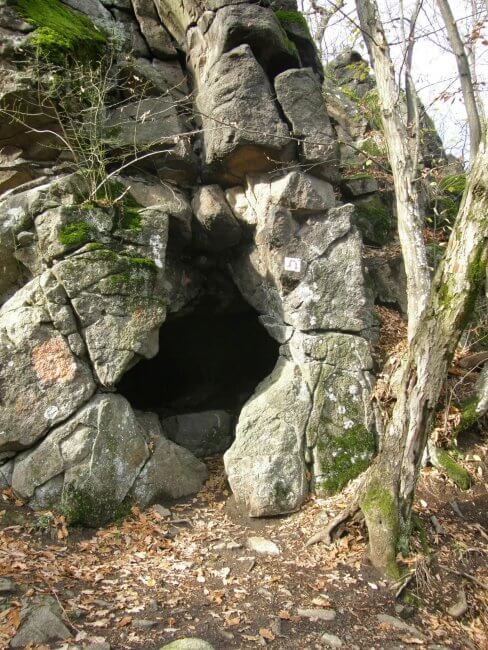The legendary Márton Vidróczki may have found shelter in the volcanic cave, which served as a hideout for the Mátra outlaws.
The legendary outlaw
Few outlaws have such vivid memories as Márton Vidróczki: legends, geographical places and even folk songs have preserved his name. Although his ‘activities’ took place in the Mátra region barely two years ago, he became the best-known outlaw in the mountain range, whose legend is faithfully preserved by the locals.
Born in Mónosbéle in the mid-19th century, Vidróczki’s father was the counting shepherd of the chateau, which meant respect and esteem. Márton was brought up in this spirit and was himself a conditioner, but in 1859 he was conscripted as a soldier in Eger. As a descendant of a shepherd family, he was well versed in wind instruments and was thus placed among the horn players. On one occasion, however, he blew the Kossuth song, which was considered a forbidden tune ten years after the defeat of the War of Independence. This led to a quarrel with his Austrian superior and a court martial sentenced him to imprisonment in Komárom.
After his adventurous release, he returned to his homeland and began his life as an outlaw, hiding in the well-known forests of the Bükk and gathering around him the poor outcasts. A few years later he was captured again and this time imprisoned in Terezienstat, one of the most severe prisons of the time, near the Moravian-Saxon border. He managed to escape from there too – he is said to have knocked down one of his guards and escaped from the fortress in his clothes – and this time sought refuge in the Mátra.
By this time, his reputation had already overtaken him, he was considered an outlaw who only robs the rich, never the poor, merciless with his enemies, but generously grateful for help. His legend was strengthened by the fact that, according to the rumor, he was a handsome man who had a reputation for being a big skirt-eater. His personality embodied the rebellion against Habsburg oppression, his freedom-loving, steadfast figure fighting against social inequalities thus became a hero of the people.
Volcanic cavity, friend of escapees
The cave located near the Alsó waterfall in the border of Mátrakeresztes bears the name of Vidróczki, although it is found on some maps as Zsivány cave. Based on this, we can assume that it served as accommodation for poor youths hiding in the mountains for a long time. The hiding place close to the village was also ideal for Vidróczki, close to the helpful population, yet free, escaping from the authorities under the protection of the mountains. Of course, it couldn’t have been very comfortable, since the cavity is low and only 5 meters long.
In volcanic mountains, such as Mátra, caves are rare shelters, which are mostly not created by seeping water, as in karst areas. The essence of the formation of the small fissure shown here is that as a result of the heat of the former lava flow, water vapor and gases were released, which merged into a larger gas bubble and created a cavity in the lava body. Later, frost and erosion opened the cave and provided shelter to the outlaws of the mountains.
It is true that the cave’s namesake could not “enjoy” the Mátra shelter for long, because he was probably killed on the Zagyva Bridge in Mátrarebély as a result of a dispute in his gang. However, his body, mutilated beyond recognition, was difficult to identify, which is why his legendary figure lived on for a long time in the vernacular: here and there, people thought he was recognized.
By public transport
Flights arrive at the Pásztó, Ágasvári shelter bus stop in Mátrakeresztes from the Pásztó train station and from the villages of Upper Mátra.
Approach
Start from the bus stop or the parking lot on the bridge next to the restaurant on the P+ sign. Upon reaching the forest, the road turns to the right, and after about 500 m, the sign PΩ branches off to the right, which leads to the cave (800 m).
Parking
There is a large, free parking lot opposite the bus stop.


